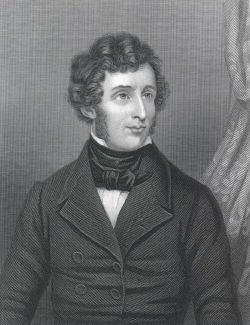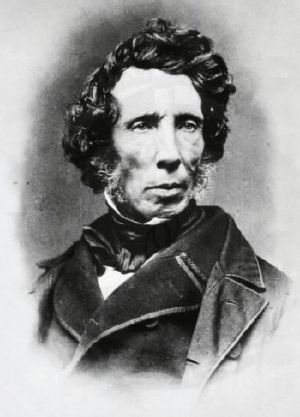Encyclopedia, Difference between revisions of "Friedrich Wöhler" - New World
Peter Duveen (talk | contribs) |
Peter Duveen (talk | contribs) |
||
| Line 21: | Line 21: | ||
==Early days== | ==Early days== | ||
| − | Friedrich Wohler was born in [[Eschersheim]] near [[Frankfurt am Main]]. | + | Friedrich Wohler was born in [[Eschersheim]] near [[Frankfurt am Main]]. at an early age, he showed an interest in scientific subjects, the study of which he pursued on an informal basis through a retired physician. At the age of 14, Wohler began attending the Frakfort gymnasium, but did not particularly distinguish himself at the time. He often neglected his formal studies to pursue his interest in chemistry and mineralogy, and this had the unintended side-effect of bringing him in contact with a number of high-profile mineral collectors such as Johann Wolfgang von Goethe, who was perhaps better known for his literary accomplishments than his scientific pursuits. During these early years, Wohler took a great interest in the isolation of elements, and wrote a paper in which he demonstrated its presence in what was called Bohemian sulfuric acid. He also successfully isolated potassium and and cadmium, his sister acting as an assistant in his experiments. Wohler was also an avid hobbyist, his interests ranging from mathematics to fine art and the collection of Roman antiquities. |
| + | |||
| + | During this period, Wohler, with the help of his mentor, a Dr. Buch, investigated the properties of cyanogen compounds. | ||
| + | |||
| + | At the age of 19, Wohler began formal studies in medicine at the University of Marburg, but after only a year, transferred to the University of Heidelberg to study under [[Leopold Gmelin]]. He graduated from Heidelberg in 1823, earning the title of doctor of medicine, surgery and obstetrics. Recognizing Wohler's proficiency in chemistry, Gmelin encouraged him to continue his main interest, and arranged for him to study under Berzelius, who was among the most famous chemists of Europe at the time. Wohler had continued his study of chemistry during his training as a physician, and as Glelin himself straddled both subjects, he encouraged Wohler to drop meciwho arranged for him to work under [[Jöns Jakob Berzelius]] in [[Stockholm]]. He taught chemistry from 1825 to 1831 at the Polytechnic School in [[Berlin]]; then till 1836 he was stationed at the [[Higher Polytechnic School]] at [[Kassel]], and then he became Ordinary Professor of Chemistry in the [[University of Göttingen]], where he remained till his death. | ||
==Contributions to chemistry== | ==Contributions to chemistry== | ||
Revision as of 04:12, 19 July 2007
<<THIS ARTICLE DOES NOT CITE ANY SOURCES.>>
<<IT IS IMPORTANT TO MENTION HIS INFLUENCE ON THE THEORY OF VITALISM, IN THE INTRODUCTION AS WELL AS IN THE MAIN TEXT.>>
| Friedrich Wöhler |
|---|
German chemist
|
| Born |
| July 31, 1800 Eschersheim, Frankfurt am Main, Germany |
| Died |
| September 23, 1882 Göttingen, Germany |
Friedrich Wöhler (July 31, 1800 - September 23, 1882) was a German chemist, best-known for his synthesis of urea, but also the first to isolate several of the elements.
Early days
Friedrich Wohler was born in Eschersheim near Frankfurt am Main. at an early age, he showed an interest in scientific subjects, the study of which he pursued on an informal basis through a retired physician. At the age of 14, Wohler began attending the Frakfort gymnasium, but did not particularly distinguish himself at the time. He often neglected his formal studies to pursue his interest in chemistry and mineralogy, and this had the unintended side-effect of bringing him in contact with a number of high-profile mineral collectors such as Johann Wolfgang von Goethe, who was perhaps better known for his literary accomplishments than his scientific pursuits. During these early years, Wohler took a great interest in the isolation of elements, and wrote a paper in which he demonstrated its presence in what was called Bohemian sulfuric acid. He also successfully isolated potassium and and cadmium, his sister acting as an assistant in his experiments. Wohler was also an avid hobbyist, his interests ranging from mathematics to fine art and the collection of Roman antiquities.
During this period, Wohler, with the help of his mentor, a Dr. Buch, investigated the properties of cyanogen compounds.
At the age of 19, Wohler began formal studies in medicine at the University of Marburg, but after only a year, transferred to the University of Heidelberg to study under Leopold Gmelin. He graduated from Heidelberg in 1823, earning the title of doctor of medicine, surgery and obstetrics. Recognizing Wohler's proficiency in chemistry, Gmelin encouraged him to continue his main interest, and arranged for him to study under Berzelius, who was among the most famous chemists of Europe at the time. Wohler had continued his study of chemistry during his training as a physician, and as Glelin himself straddled both subjects, he encouraged Wohler to drop meciwho arranged for him to work under Jöns Jakob Berzelius in Stockholm. He taught chemistry from 1825 to 1831 at the Polytechnic School in Berlin; then till 1836 he was stationed at the Higher Polytechnic School at Kassel, and then he became Ordinary Professor of Chemistry in the University of Göttingen, where he remained till his death.
Contributions to chemistry
Wöhler is regarded as a pioneer in organic chemistry as a result of his (accidentally) synthesizing urea in the Wöhler synthesis in 1828. Until 1828, it was believed that organic substances (i.e., protoplasm) could only be formed under the influence of the vital force in the bodies of animals and plants. Wöhler proved by the artificial preparation of urea from inorganic materials that this view was false. Urea synthesis was integral for biochemistry because it showed that a compound known to be produced only by biological organisms could be produced in a laboratory, under controlled conditions, from inanimate matter. This in vitro synthesis of organic matter disproved the common theory (vitalism) about the vis vitalis, a transcendent "life force" needed for producing organic compounds. By showing that ammonium cyanate can become urea by an internal arrangement of its atoms, without gaining or losing in weight, Wöhler furnished one of the first and best examples of isomerism, demolishing the old view that equality of composition could not coexist in two bodies, A and B, with differences in their respective physical and chemical properties. In the year of his urea synthesis, Wöhler became professor at the age of 28. Two years later, in 1830, Wöhler published, jointly with Justus von Liebig, the results of a research on cyanic acid and cyanuric acid and on urea. Berzelius, in his report to the Royal Swedish Academy of Sciences, called it the most important of all researches in physics, chemistry, and mineralogy published in that year. The results were quite unexpected, and furnished additional evidence in favour of isomerism.
Major works, discoveries and research
Wöhler was also a co-discoverer of beryllium and silicon, as well as the synthesis of calcium carbide, among others. In 1834, Wöhler and Liebig published an investigation of the oil of bitter almonds. They proved by their experiments that a group of carbon, hydrogen, and oxygen atoms can behave like an element, take the place of an element, and can be exchanged for elements in chemical compounds. Thus the foundation was laid of the doctrine of compound radicals, a doctrine which had a profound influence on the development of chemistry.
Since the discovery of potassium by Humphry Davy, it had been assumed that alumina, the basis of clay, contained a metal in combination with oxygen. Davy, Oerstedt, and Berzelius attempted the extraction of this metal, but failed. Wöhler then worked on the same subject, and discovered the metal aluminium. To him also is due the isolation of the elements yttrium, beryllium, and titanium, the observation that "silicium" (silicon) can be obtained in crystals, and that some meteoric stones contain organic matter. He analyzed a number of meteorites, and for many years wrote the digest on the literature of meteorites in the Jahresbericht der Chemie; he possessed the best private collection of meteoric stones and irons existing. Wöhler and Sainte Claire Deville discovered the crystalline form of boron, and Wöhler and Buff the hydrogen compounds of silicon (the silanes) and a lower oxide of the same element.
Final days and legacy
Wöhler's discoveries had great influence on the theory of chemistry. The journals of every year from 1820 to 1881 contain contributions from him. It was remarked that "for two or three of his researches he deserves the highest honor a scientific man can obtain, but the sum of his work is absolutely overwhelming. Had he never lived, the aspect of chemistry would be very different from that it is now." <<WHERE IS THIS QUOTE TAKEN FROM? WE NEED A SOURCE AND WHO SAID IT.>>
While sojourning at Cassel, Wöhler made, among other chemical discoveries, one for obtaining the metal nickel in a state of purity, and with two friends he founded a factory there for the preparation of the metal.
Works
- Lehrbuch der Chemie, Dresden, 1825, 4 vols.
- Grundriss der Anorganischen Chemie, Berlin, 1830
- Grundriss der Organischen Chemie, Berlin, 1840
- Praktische Übungen in der Chemischen Analyse, Berlin, 1854
See also
- Urea
- Vitalism
ReferencesISBN links support NWE through referral fees
<<We need at least 3 reliable references here, properly formatted.>>
Credits
New World Encyclopedia writers and editors rewrote and completed the Wikipedia article in accordance with New World Encyclopedia standards. This article abides by terms of the Creative Commons CC-by-sa 3.0 License (CC-by-sa), which may be used and disseminated with proper attribution. Credit is due under the terms of this license that can reference both the New World Encyclopedia contributors and the selfless volunteer contributors of the Wikimedia Foundation. To cite this article click here for a list of acceptable citing formats.The history of earlier contributions by wikipedians is accessible to researchers here:
The history of this article since it was imported to New World Encyclopedia:
Note: Some restrictions may apply to use of individual images which are separately licensed.

